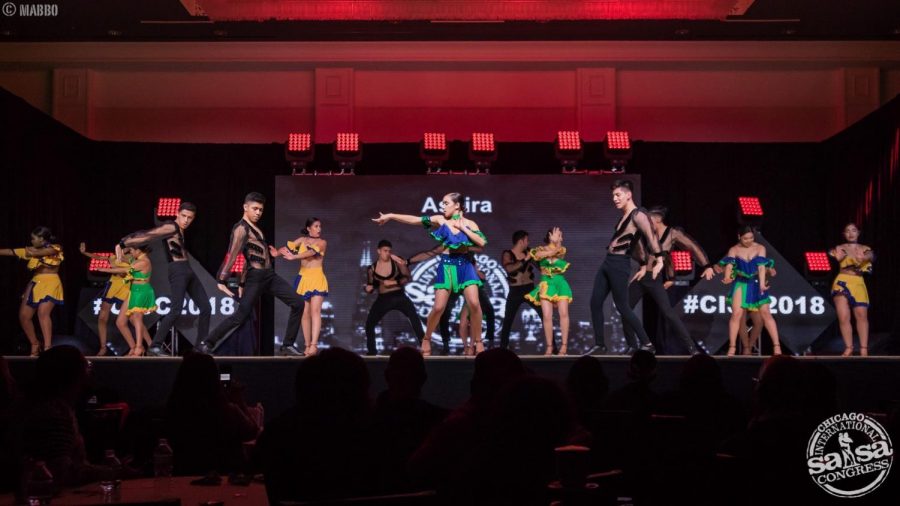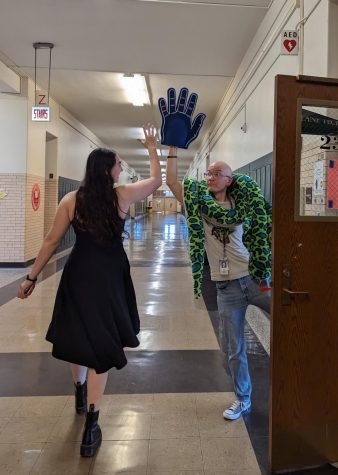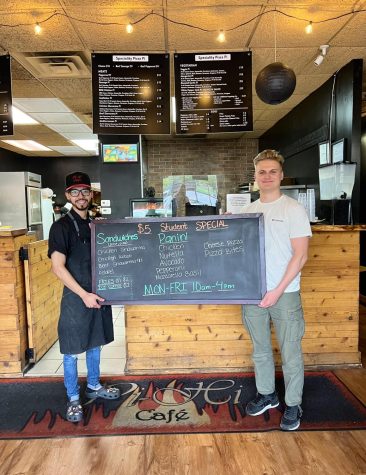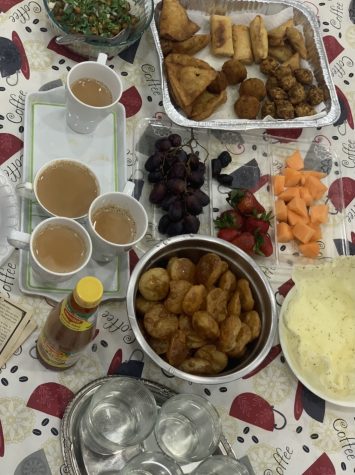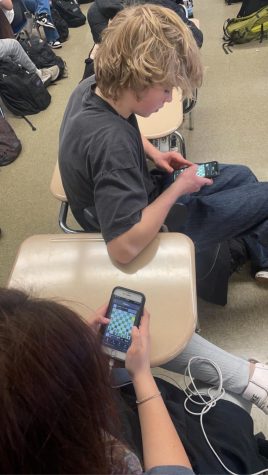Honoring Hispanic Heritage
Aspira is among the many Hispanic Clubs that perform at Lane Tech International Days and the Chicago International Salsa Congress. (Photo courtesy of Michael Mabbo).
October 22, 2018
As students walk through the crowded halls and staircases during passing periods, they take a second and glance at the many posters hung up on the walls. They may feel pride as they peer at the tryout posters for clubs such as España Club and Salvadoran Club, or the many posters portraying traditional and popular Hispanic foods such as mole poblano, empanadas and churrasco.
Sept. 15 to Oct. 15 marks National Hispanic Heritage Month, which recognizes the ways Hispanics have contributed to this nation with their rich culture and heritage. It also recognizes the many countries — Mexico, Costa Rica, Guatemala, El Salvador, Belize, Honduras, Nicaragua, and Chile — that gained their independence in this month.
Hispanic Heritage has been celebrated since 1968, although it was originally Hispanic Heritage Week under President Lyndon Johnson, and was expanded in 1988 to Hispanic Heritage Month by President Ronald Reagan, according to hispanicheritagemonth.gov.
The term Hispanic began being used more widely in the 1970s and was adopted primarily for the U.S. Census, according to the Pew Research Center.
Although many use the terms Hispanic and Latino interchangeably, there is a misconception that the two are the exact same, said Ms. Vale, who teaches Latin American Literature.
“While a person like myself, let’s say, can be considered both Hispanic and Latina, that doesn’t mean that everyone identifies that same way,” Vale said. “The similarity is that there might be a commonality with the language, but the difference is Latin American, or Latino, means people from Latin American countries — and it doesn’t matter what language they speak. Hispanic can mean people who are Spanish — because they speak Spanish.”
Vale’s class focuses on topics and issues that are important to contemporary Hispanics and Latinos but also acknowledges the historical and cultural topics that have influenced the way these communities are shaped today.
“I think it’s important for this type of class to exist because it allows students an opportunity to further examine the culture of a group of people that are often stereotyped and lumped together, and at times, even feared because of an ignorance that people may have,” Vale said.
Students who identify as Hispanic celebrate their roots not only in this month, but all year long, according to William Garcia, Div. 979, who identifies with the Mexican community. Garcia enjoys the many other celebrations that are held through the year, insisting that it brings others together, no matter the occasion.
“I think all of the little festivals, like special days that we have, brings everyone together,” Garcia said. “On Christmas we celebrate Jesus, for Thanksgiving we all come together, for Dia De Los Niños we celebrate the kids. All of those celebrations help us unite and be together. It’s not just because of this month we should celebrate: we should celebrate all year and every day.”
Students at Lane celebrate and recognize the different Hispanic cultures that they identify with in many ways, such as International Days as well as The Chicago International Salsa Congress.
Aileen Escobar, Div. 956, a member of the Organization of Latin American Students (OLAS), acknowledged how International Days is an opportunity to experience and take advantage of the diverse school which she and other students are proud to be a part of.
“Lane is very diverse,” Escobar said. “You see all types of cultures here and that’s actually what’s pretty unique about it, especially because that’s how clubs can start. There’s already two new Latin associated clubs, which are Nicaragua and Cuba. I really hope it does progress more. It’s always changing every year.”
Celebrating their Hispanic heritage and recognizing the diversity that the Hispanic community holds also creates a space to address the stereotypes and misjudgments that may be carelessly thrown around. Vale emphasized the fact that the Hispanic community has an incredible variety in its cultures.
“The Latino community is so multifaceted,” Vale said. “We have so many different kinds of traditions and cultures and music and food. Latinos are made up of many different people from many different countries. It’s very difficult to say that we’re all the same, yet many people make that claim and base stereotypes on what they believe a certain group of people are like.”
Garcia hopes to see a change in the way cultures are represented, through working with others to redefine the way Hispanics are perceived.
“I get to be that voice and get to break stereotypes, which a lot of Mexicans don’t have the opportunity to do so,” Garcia said. “Even though I’m just one individual, if we all do the hard work it could benefit in the future and it could really show we’re not who were portrayed to be.”
Similarly, Vale underlined the importance of examining and discovering the commonalities between people as well as working together to break those stereotypes.
“If we really got to know each other as human beings instead of trying to pigeonhole each other, we would see that we have so much more in common than we even realize,” Vale said. “The things that make us different and unique, those are the special things about us and the things that are interesting and exciting for us to find out about, and not things that we should fear. If we can get to know each other, we could potentially decrease and maybe even get rid of the hate that we have in this country.”

